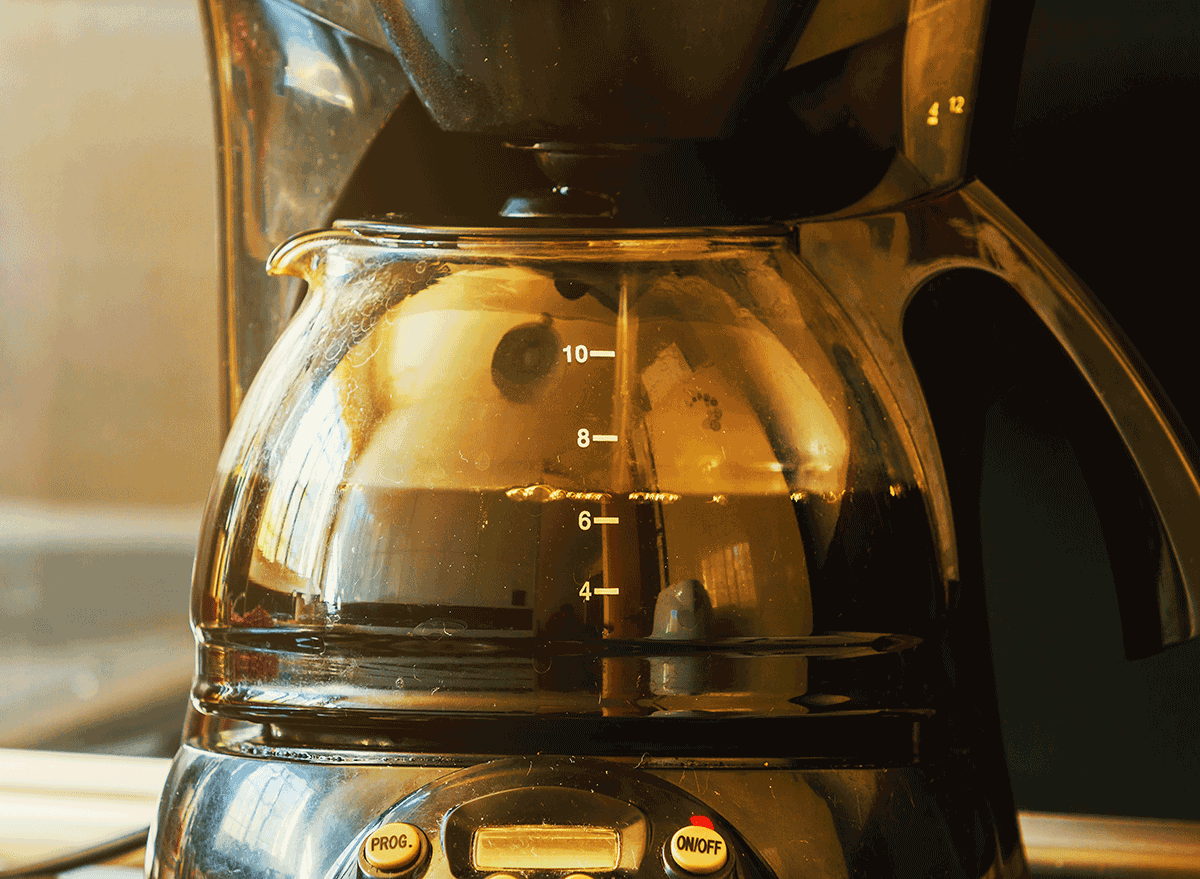This Is Really How Often You Should Be Cleaning Your Coffee Maker

Many people have to start their morning off with a cup of coffee for that quick kick of caffeine (we can relate). Those who partake in such a morning ritual often choose to brew their own coffee at home, as it’s less expensive and quicker than a trip to Starbucks. If brewing a piping hot cup of joe every morning is a fundamental part of your morning routine, then knowing when and how to clean your coffee maker is critical to making the best tasting (and bacteria-free) cup of coffee.
We called on an expert, Beth McGee, author of Get Your House Clean Now: The Home Cleaning Method Anyone Can Master to better understand just how often you should be cleaning this everyday kitchen appliance.
How often should you clean your coffee maker?
“If you use your coffee maker every day, it should get a good cleaning about once per month,” says McGee. “Coffee grounds leave residue in the brew basket, and water stains and bacteria can collect in the brewing components.”
The brew basket isn’t the only culprit of trapping bacteria. According to a study on germs in the household led by the National Science Foundation, 50 percent of households observed had yeast and mold lying within the coffee maker’s reservoir, which is the chamber that holds the water. Yuck!
What parts of the coffee maker should you clean?
“For regular coffee brewers, remove any baskets and soak them in a sink of hot water and a cup of vinegar,” says McGee.
What’s the best way to clean a coffee pot?
Here is a step-by-step guide you can follow:
- Fill the coffee maker for a whole pot with 1 part water and 2 parts white vinegar, and brew a pot without grounds.
- Repeat, running the same water through a second time.
- Rinse your baskets with clean water, and run one more pot with water and one scoop of grounds in the basket to get rid of any remaining vinegar taste or odor.
- Once finished with the coffee maker itself, spray the inside of the pot with a spray bleach cleaner and let sit for a minute.
- Wipe out the inside and rinse with hot water.
- If you burn coffee on the inside or outside of the pot, you may use Bar Keepers Friend with a scratch-free sponge or cloth to scrub those stains clean.
If you don’t have a traditional drip coffee maker, that doesn’t mean you earn a get out of jail free card—all coffee makers need a good scrubbin’.
“Coffee makers, like a single cup and Keurig machines, should also be cleaned. These can be done using the same method but without a pod. You may also use a descaling product specifically for this purpose,” McGee explains. “French presses are generally cleaned after each use. However, it is a good idea to take the screens apart and wash them or soak them in white vinegar once a month as well, especially if you use flavored coffees.” As always, remember to rinse thoroughly after you’ve soaked the appliance in vinegar.
Why is it important to clean your coffee maker often?
“Cleaning your coffee maker will improve the taste of your beverages,” says McGee. “Coffee generally has a lot of acid in it, and your coffee maker can take on a burnt odor that will impact the flavor of anything you brew in it.”
She also says that limescale, which is a hard white substance made primarily of calcium carbonate that deposits anywhere from pipes to coffee makers to kettles, can build up and inhibit the pace at which your coffeemaker brews coffee. Cleaning your coffee maker also increases its longevity, and you want to keep your trusty coffee maker for as long as you can, right?